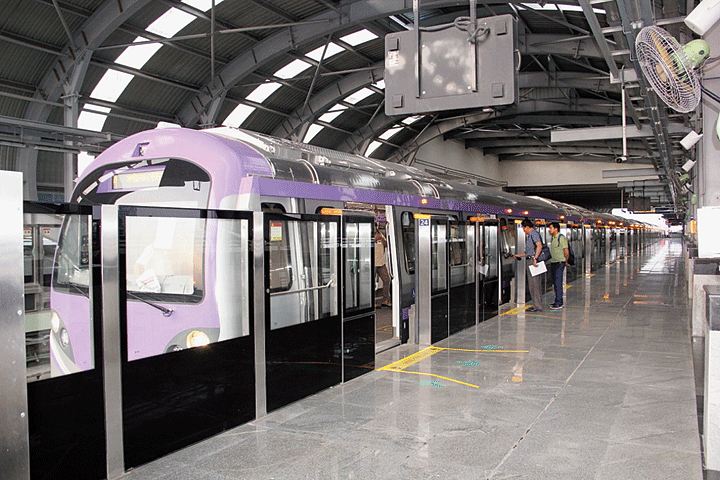The problem of doors of East-West Metro trains not aligning with platform screen doors persists despite repeated trials, sources said on Monday.
The East-West Metro corridor, which will stretch between Salt Lake Sector V and Howrah Maidan, has been designed in a way that trains will run on an automatic control and signalling system. They will stop automatically at a station, with its doors synced with the platform screen doors.
But the system will kick in only when trains run at least till Phoolbagan from Sector V. In the first phase the trains will cover a shorter stretch, between Sector V and Salt Lake stadium.
Till the automated system is functional, the onus will be on drivers to stop the trains at the stations in a way that compartment doors are perfectly aligned with platform screen doors.
“During the last phase of the trial that continued for 10 days till Monday, there were repeated instances of drivers failing to align platform screen doors with train doors. The development has made it uncertain when the service will be operational,” a Metro official said.
“The percentage of errors committed by drivers while stopping the train at a station has been reduced significantly. It is now barely one per cent. We will submit a report to the higher authorities, who will decide whether there is a need for more trials,” an official said.
A Metro official said a problem in alignment during a commercial run may lead to chaos. “Every time it happens, the driver has to take the train backward or forward to achieve the perfect alignment. That will lead to delay.... We have to bring down the margin of error to the minimum,” he said.
The drivers of East-West Metro, who have been loaned from the north-south Metro, have been trained at the Bangalore unit of BEML, the company that has manufactured the trains.
“They need more training to align the two sets of doors,” the official said.
The East-West trains will run on a communication-based control and signalling system. The system has no signal posts or fixed blocks. A train will pick up signals from the tracks, which will be open for it to move only when the earlier train moves. If the tracks are blocked, a train will stop automatically.
“The driver’s role in the automatic train operation system’s grade II, which will be implemented in East-West Metro, will be minimal,” said an official of Kolkata Metro rail Corporation (KMRC), the implementing agency of the project.
“The driver will close the doors and start the train. The automatic train operation system will take over from there. The driver will monitor the system and only interfere during an emergency.”
In the first phase, however, the automatic train protection system will not be used. The driver will start and stop the train, like a driver does in north-south Metro.
A display system in the cabin will tell the driver the distance from the nearest station, so he could apply the brakes in time.
But why will the automatic system not be implemented in the first phase?
“We need to upgrade the system to do that. Plus, we will also need to tune it every time the operation is expanded. So, it makes sense to operationalise the system only when the trains run till Phoolbagan from Sector V,” he said.










